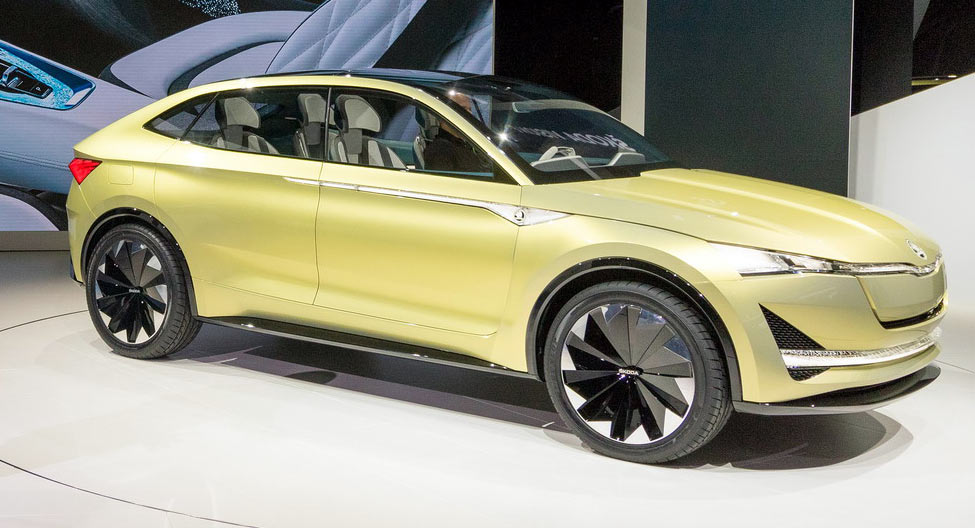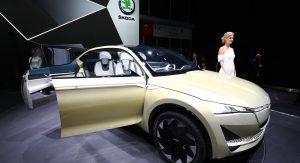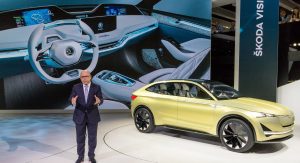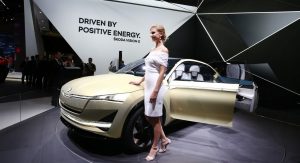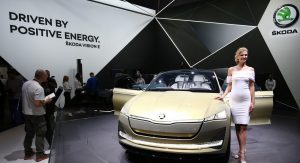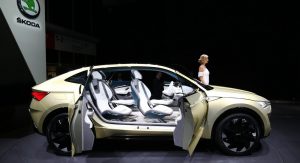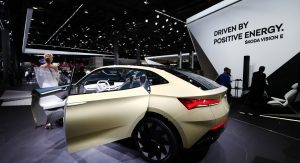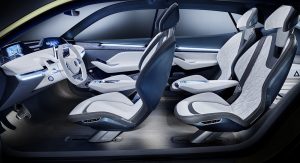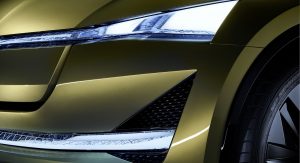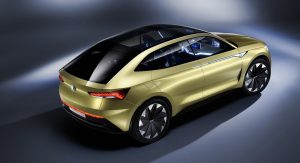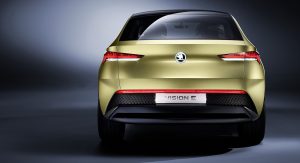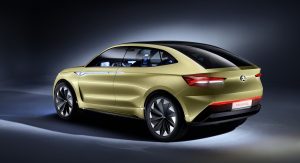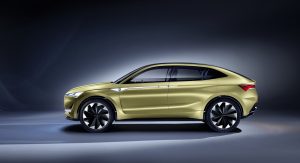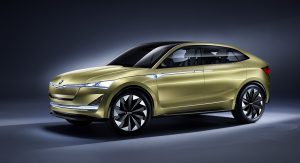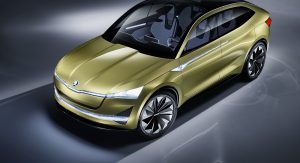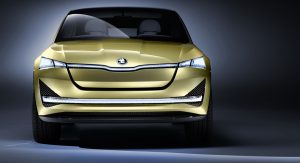Taking center stage for Skoda at the 2017 Frankfurt Motor Show was a very familiar concept, one that the Czech automaker first introduced in Shanghai earlier this year.
Even then, it was Skoda’s first ever full-electric car, powered by two electric motors with a combined output of 306 PS (302 HP), and a liquid-cooled lithium-ion battery, with a range of 500 km (311 miles).
For Frankfurt, the Vision E also dove into the topic of Level 3 autonomous driving, where Level 3 means tasks such as accelerating, braking, finding available parking spaces and even memorizing preferred parking locations, can be done automatically.
Now, while we could talk again about its features and clever gizmos (gesture control, voice control, eye tracking tech), we have yet to really touch on this concept’s design and what it would mean for an established, yet non-premium brand such as Skoda to build such an advanced crossover in the not so distant future.
To be fair to then, seen as how the Vision E is supposed to be not just autonomous, but also entirely electric and luxurious, we really shouldn’t expect Skoda to come out and build it in the next few years. Realistically speaking, the automotive industry tends to progress a lot slower than concepts and new technologies would have you believe.
For example, visually, the only difference between a 2017 Skoda Octavia and a 2007 model is a more modern design philosophy. The MY2017 car simply looks a bit sharper and by no means futuristic (often defined by an aggressive yet minimalist look). It will also brake and steer itself in certain conditions, and has way better connectivity features – it “only” took 10 years to get there.
It’s also possible, if not probable, that Skoda might never actually build a car that looks like this, unless the entire automotive landscape shifts considerably to where current premium brands take an even bigger step forward in their pursuit of perfection.



